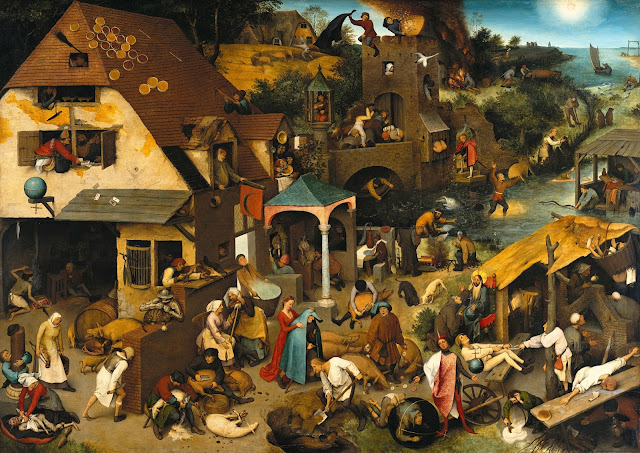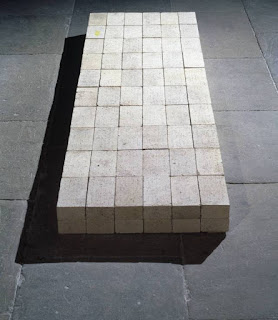 |
| Marginal drawing of Folly by Hans Holbein in the first edition of Erasmus's Praise of Folly, 1515 |
This summer the early music festival in Bruges is entitled, 'Lof Der Zotheid' after the 15/16th cen. Dutch humanist Desiderius Erasmus' book of the same name in which the personification of the goddess 'Folly' narrates the full extent of her power over gods and mortals, providing an mask for Erasmus, made even more complex by subtle double ironies, to lampoon the absurdities of his own day in church and state.
I decided to re-read my old school copy in preparation. The pursuit of 'happiness' through ignorance and self-delusion was, its seems, the same then as it is now - as Folly says,
"What difference is there, do you think, between those in Plato's cave who can only marvel at the shadows and images of various objects, provided they are content and don't know what they miss, and the philosopher who has emerged from the cave and sees the real things ? "
Fortunately early music can be heard at other times of year as well and Paul Van Nevel's Huelgas Ensemble gave a powerful performance on Saturday evening of the 17th century Portuguese composer Joao Lourenco Rebelo's Vesper Psalms and Lamentations at the concertgebouw.
Meanwhile I was delighted to find this hand-thrown terracotta water jug for only 6 euros in a flea market on the Langstraat last week. Although I doubt it is very old (the glaze seems too shiny and new) it fits well the profile of the pot fragments that were dug out of the terrace with it's medieval profile and moreover is eminently useful.
With the brick floor laid in the hall and drying ready for a clean and 'polish' I shifted focus to the walls which have already been prepped and worked up a leveling coat of NHL 3.5 as a preliminary to adding a finishing layer with finer sand. I have quite a few square meters of wall to cover before the end of June but I can reasonably manage around 5 or 6 in a day. P worked on fitting up the cupboards and
surface for the sink, oven and washing machine for the new small
kitchen so I can can tile and plaster behind. When I can get the plumber
and electrician to connect gas and electric to the mains here I can
cook !
In 'Loft Der Zothied' Erasmus scholarly theology and classical humanism is balanced by robust common sense and waspish humour and irony that perhaps owes as much to the folk wisdom of his day as it does to his formidable formal schooling and academic career. One can surely detect a similar vision of human folly in Breugel's 'Netherlandish Proverbs' in which the artist creates a typical landscape peopled by theater of fools embodying through their outlandish behaviour a rich variety of popular idiomatic folk wisdom.
 | ||
| Nederlandse Spreekwoorden, Flemish Proverbs, 1559 oil-on-oak-panel Pieter Bruegel the Elder | 1 |
Niemant en kent hem selven niet, diet wel aenmerct die siet groot wondere
(There is hardly anyone who knows himself, he who comprehends this discovers great wonders.)
























